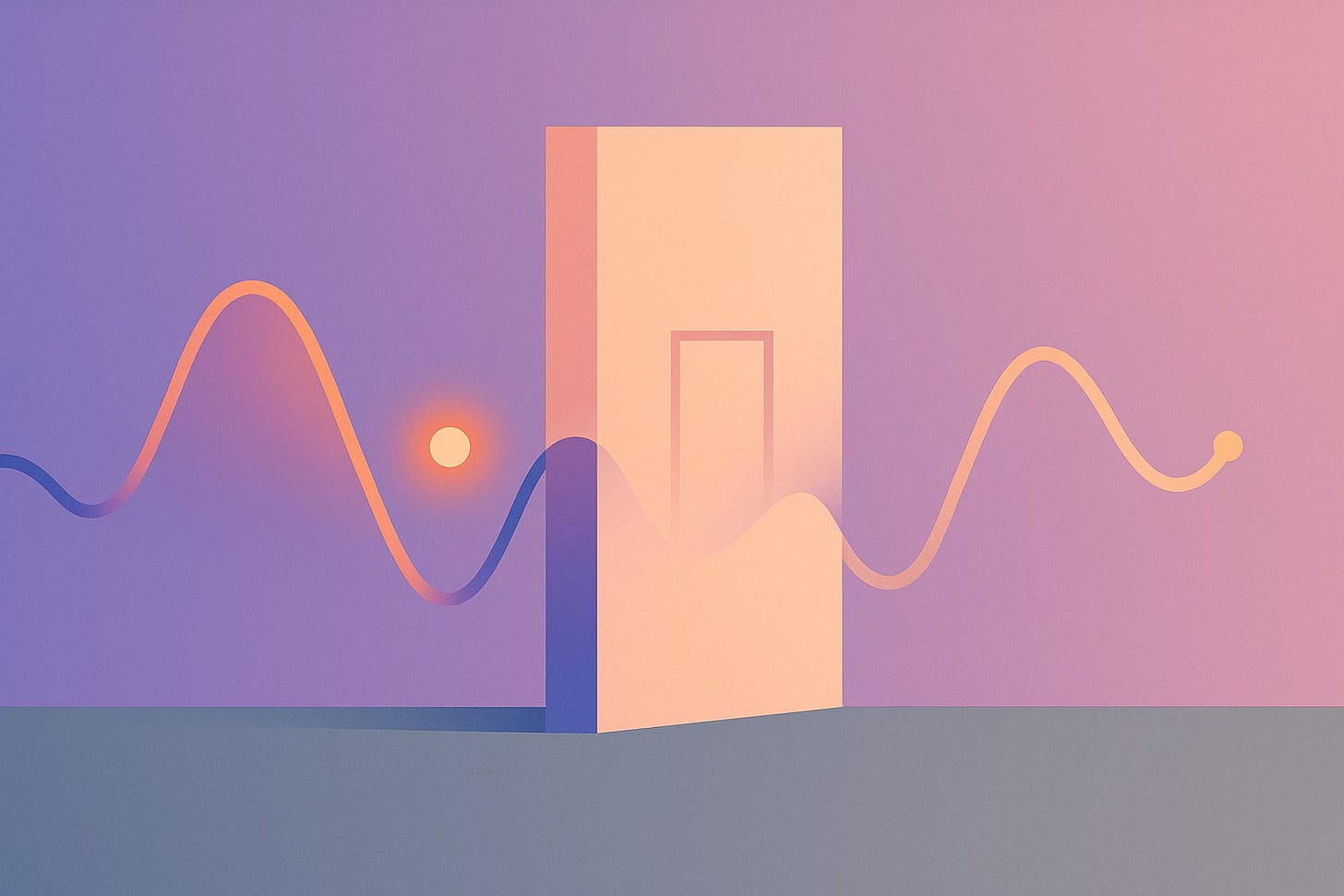Quantum Spielerei 15: The Wall That Sometimes Isn’t — Tunneling
Take a marble and a brick wall. Throw the marble.
Classical answer: bonk.
Quantum answer: very rarely the marble shows up on the other side without breaking the wall or itself. No trap door, no secret tunnel—just tunneling.
What’s really happening (the short, true story)
Particles aren’t hard dots; they’re waves of possibility. When a matter-wave meets a barrier that’s not infinite, the wave doesn’t stop—it fades inside the wall (like music muffled by a door) and a tiny tail leaks through.
If you then check on the far side, there’s a small chance you’ll find the particle there. No cheating, no stolen energy—just the wave never went exactly to zero.
Bar-napkin math: transmission \sim e^{-2\kappa L}, with \kappa\propto\sqrt{(V-E)}.
Thicker/taller barrier L,V → exponentially smaller odds; lighter particles and higher energy → better odds.
Why this matters (beyond “cool party trick”)
The Sun keeps shining.
Protons don’t have enough classical oomph to fuse, but they tunnel through their electric repulsion. No tunneling → no sunlight → no coffee.
Alpha decay.
Helium nuclei escape heavy atoms by tunneling out of the nuclear “moat.” That’s where some radioactivity comes from.
Microscopes that “feel” atoms.
STM (scanning tunneling microscope) measures a tunneling current that changes exponentially with tip distance—so sensitive it can map individual atoms like Braille for physicists.
Your gadgets.
Flash memory programs bits by letting electrons tunnel through an ultra-thin oxide; tunnel diodes and Josephson junctions (superconducting circuits, SQUIDs, qubits) are tunneling playgrounds.
Myths, deflated
“It violates energy conservation.” Nope. The particle’s energy stays the same; the allowed wave just has a tiny transmitted piece.
“So macroscopic stuff can pop through walls?” In principle, yes; in practice the odds are so astronomically small you’d wait longer than the age of the universe. Decoherence kills the magic for big things.
“It’s teleportation.” Not quite. There’s no “poof and reappear” story inside the barrier—just an evanescent wave that never fully disappears.
Pocket analogy
Think of reality as a house with very thin walls. Loud songs (high energy, light particles) can be faintly heard in the next room; lullabies (low energy, heavy particles) die in the plaster. Quantum just formalizes how much sound sneaks through—and sometimes lets the singer be found on the other side.
One-liner to keep
Tunneling is nature’s “maybe” slipping through a “no”: when the wave of possibility fades but never hits zero, reality leaves a door slightly—exponentially—ajar.


